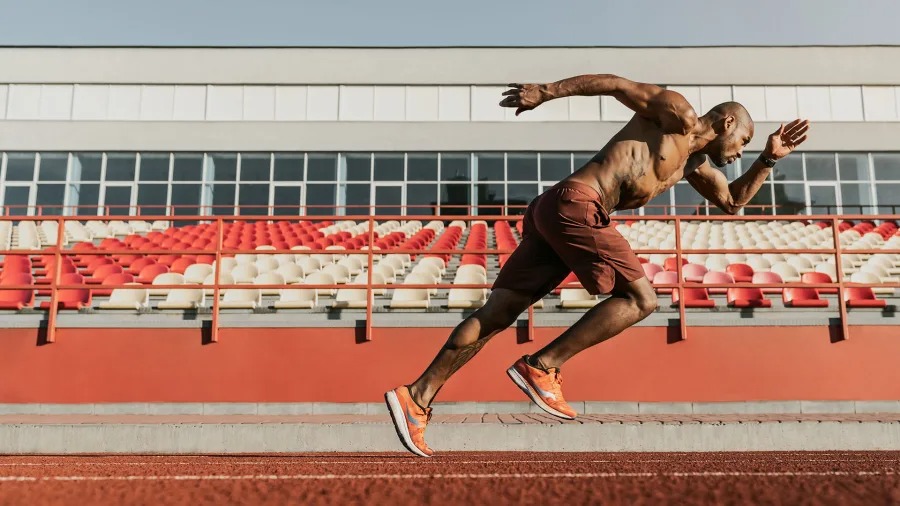
Which types of running styles to select according to your health?
There are different types of running events depending on different conditions. Advance runners know that all the types of runs are not all equal. What happens to the body during jogging is different from what happens while a sprint. To be a great runner you have to choose your race accordingly. If you want to become a faster and stronger runner, you need to mix up your training runs. This is because you cannot stick to the same distance at the same effort level.
How many Types of running are there?
There are basically 9 different types of running each having its own purpose and benefits. The following section explains 9 different types of running that will help you become a better runner. You don’t have to do all of these every week, but you should make a training routine. The benefit of mixing up these runs is that not only will they increase your speed, stamina and strength, but they’re also fun!
Base/ normal runs
Base runs are one of the most common types of running. These runs are about runners’ natural speed and relatively short to moderate distances. These are not the hardest exercises and should be done often. Base runs take up the majority of your weekly training mileage, as they are similar to your “average” running workout. The main purpose of Base Runner is to establish a strong foundation for your run and increase your aerobic fitness. This classic long-distance training zone is also effective for weight control and increases the capillary network and therefore blood circulation. The focus is to maintain the natural rhythm. Heart rate and breathing rate should increase but communication should still be possible. Repeated sessions at this level are possible without worrying about fatigue.
Progression runs

A progression run is a run that starts at the runner’s natural pace and ends with a fast segment, so you slowly pick up speed as the run continues. Progression runs are similar to base runs, but the goal is to gradually increase speed and intensity throughout the duration of the run. These runs are to be moderately challenging, and harder than base runs but are good for improving your running ability, and mental strength and teaching the body to run faster at the end of the race and building running ability. The main advantage of running at a progressive pace is that you can train both your aerobic and anaerobic systems in the same run. Progression running trains your body to keep pace, even when you’re tired. These types of running help your body to keep pace, even when you’re tired. This type of running exercise also builds mental strength and endurance. Progressive runners focus on your running pace and are excellent for strengthening control discipline.
Recovery run
A recovery run is a relatively low-intensity, easy-effort short run that is completed at an easy pace within 24 hours of a race or hard workout. Recovery runs help your body recover and bounce back from hard workouts.
The goal is to get your heart pumping and muscles to support circulation and recovery without further taxing your body. This one of the different types of running activities keeps you stay active and avoid laziness while the body recovers. It’s especially important to get enough recovery in the days after your high-intensity exercise, like intervals or long runs. This is one of the best parts of recovery runs that they allow you to recover without affecting your weekly mileage. While it can be difficult to slow things down after a particularly intense session, taking it easy the next day is essential to avoid overtraining and injury.
Long run
A long-distance race is one of the types of run which is also called an endurance race. You can think of long-distance running as an extended version of your base runs. You’ll still run at that natural pace, just for more miles. The specific distance and duration for your long runs will vary with your current level of endurance. Even if you’re just running at your average pace, adding that distance and maintaining that pace is a huge boost to your endurance. You are essentially training your body to adapt to long periods of running to ensure that it can handle the next run without any problems. It is responsible for a variety of long-term physical benefits. These include increasing the ability to use fat as fuel, improving cardiovascular health, and improving leg muscle strength and endurance. The long duration of long runs also creates mental toughness. The function of a long run is to build endurance, aerobic capacity and endurance.
Fartlek
What are fartlek runs? Fartlek training is essentially interval training but with less structure and intensity. This is similar to interval runs but involve throwing fast segments into a continuous base run, either structured or unstructured. This can be a mix of jogging and sprinting, but for beginners, it can be walking with jogging sections. Fartleks are a method of speed training that mixes fast and slow intervals without using a specific distance or intensity for each interval. There is no pause between intervals; The runner only adjusts speed between recovery and “on” intervals. Fartlek is one of the types of running that gives you the opportunity to improve your body’s aerobic endurance without having to stick to a specific time or pace. Fartlek runs can be good for people who aren’t able to use a track for their sessions, as you can increase your intervals based on effort rather than speed and also take into account the terrain, which may be hilly or it can be muddy.
Hill repeats
Hill repeats are short sections of hard uphill running. Hill repeats are the types of running at a high intensity so don’t run up to regular base run pace to avoid any risk of injury. Running with hill repetitions strengthens the muscles, builds stamina and increases leg strength, improves endurance, and uses the legs, arms, aerobic power, resistance to high-intensity fatigue, pain tolerance, and core muscles in ways that are flat. Start at the bottom of the hill, choose a destination at the top of the hill and climb the hill to get there as fast as possible. Speed back to your starting point and repeat. The distance will be much shorter than your usual run, but the fast sprints, plus the incline, will make it harder. The ideal hill on which to hill run has a steady, moderate gradient of 4 to 6 per cent. The grade of incline and length of the hill to use depends on your race goals. The hill should be long enough that you can sprint up it for about 30-90 seconds, and do eight to ten reps in total.
Intervals
Interval exercise consists of repeated short segments of fast running followed by slow jogging or standing to recover. This format enables a runner to induce faster sprints in a single workout, which in turn increases tolerance to lactic acid, improving running economy among many physiological changes. These physiological changes include an increase in heart power as well as the ability to deliver oxygen to working muscles, leading to a better ability to run faster. This is one of the types of running workouts that involves running specific distances on a track with the goal of getting you running faster, learning the feel of different speeds, and increasing your fitness. Interval training is strictly focused on running at high intensity in short bursts. Traditional intervals involve running a certain distance at a certain pace.
Tempo run
A tempo run refers to a “comfortably hard” pace that you can maintain for a long period of time. They are also known as threshold runs because they involve running at your threshold pace, which is roughly the pace you can maintain for an hour. The threshold is the fastest pace that can be sustained for 60 minutes in highly fit runners or the fastest pace that can be sustained for 20 minutes in fewer fit runners. Tempo running exercise builds lactic acid in our muscles.
The primary function of regular tempo runs is to increase our lactate threshold, which allows us to run faster without tiring. Tempo or threshold runs work to increase the speed you can maintain for longer periods of time and increase the amount of time you can maintain that relatively fast pace.
Sprints

Sprint exercise refers to running a shorter distance than normal speed with more than one repetition during the exercise. It is one of the types of running races that are short distances races in which athletes try to run at their maximum speed throughout the entire distance of the race. Adding sprinting to your training will improve your muscle strength and power as well as your sprint finish. Sprinting is great for fat loss because it’s high in nature, requires multiple short bursts of effort, and greatly increases your metabolism after exercise.
Sprint training burns massive calories increase your cardiovascular fitness, builds muscle, and increases your speed, power, and strength so you can run faster. If you want to get fitness in a short time, try to add sprints workouts to your routine.
FAQ
How to choose running shoes?
If you are wondering about What type of running shoe do I need? How to choose a running shoe? What running shoes do I need? Then you must consider some points that would be beneficial for you while selecting the different types of running shoes brands.
- Firstly think about where you are planning to run
- Secondly, decide if you want more or less cushioning underfoot
- Decide whether you need a specific type of support for your gait
- Make sure the shoe fits firmly
How many types of running are there?
There are 9 different types of running exercises that will benefit you while your training workout. Each type of training run has a specific purpose and benefits:
- Long run
- Base run
- Recovery run
- Hill repeats
- Progression
- Intervals
- Fartlek
- Sprints
- Tempo run
What is the difference between a tempo run and a fartlek?
Tempo run and fartlek are two different types of running exercises. A tempo run refers to threshold runs because they involve running at your threshold pace, which is roughly the pace you can maintain for an hour. Fartlek training is similar to interval runs but involves throwing fast segments into a continuous base run, either structured or unstructured.
What are the types of running shoes?
There are mainly 5 types of running shoes that you should be familiar with before deciding to buy them.
- Lightweight shoes
- Trail shoes
- Stability shoes
- Motion control shoes
- Cushioned shoes
- Road running shoes
- Zero-drop shoes
- Cross-trainers shoes
- Hiking boots
- Cycling shoes








